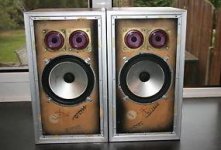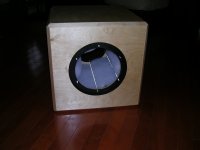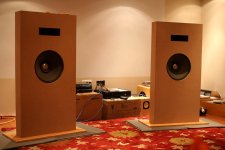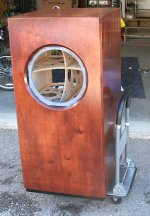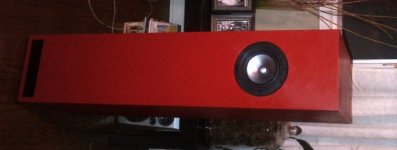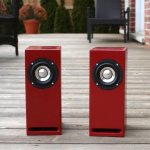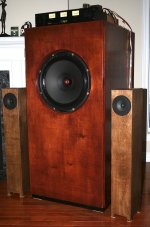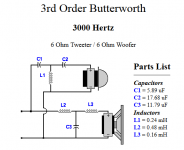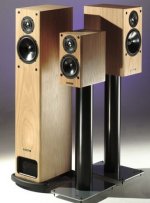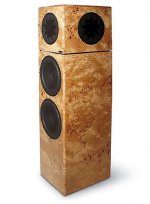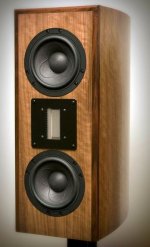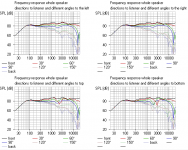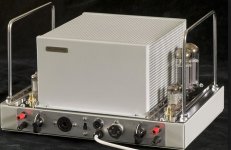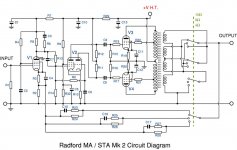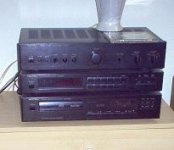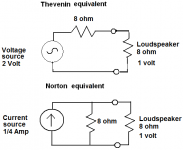I don't think Bigun was trolling at all...
Perhaps he was suggesting a lower XO point like 500Hz and use a full range (wideband) driver for the "tweeter" - similar to FAST systems over in the Full Range Forum. FAST (Fullrange Assisted Subwoofer Technology) or 2-way speakers with low XO point can sound very good.
Here is one example of a FAST that I really think sounds great using an RS225-8 and Scan Speak 10F/8424 as the midtweet.
10F/8424 & RS225-8 FAST Ref Monitor
I made a passive transient perfect 1st order XO for it, and now use this as my main speaker for testing amps over the past 2 years (ignore label that says FF85WK - works for either driver):
Frequency Response and Phase:
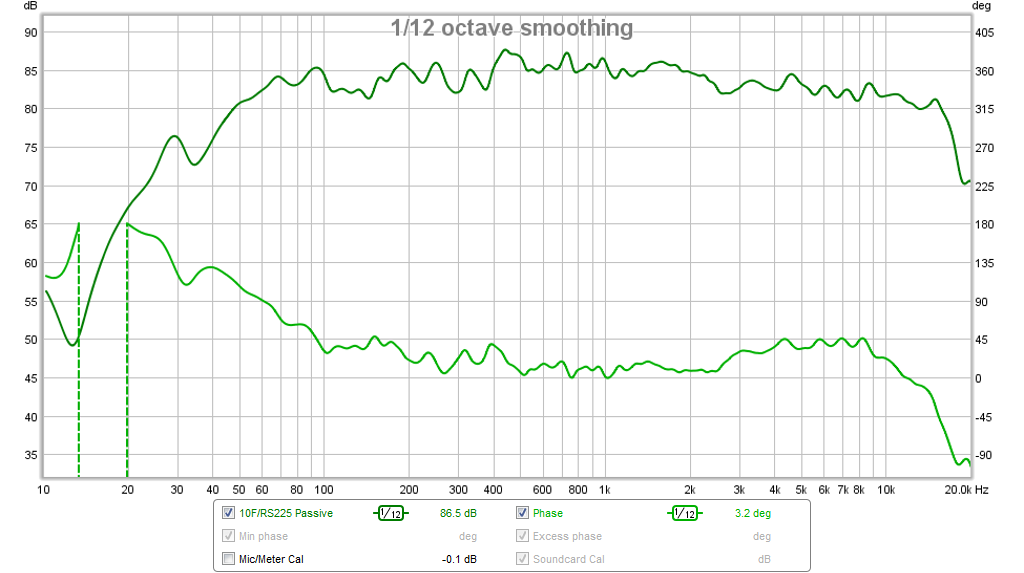
Distortion:
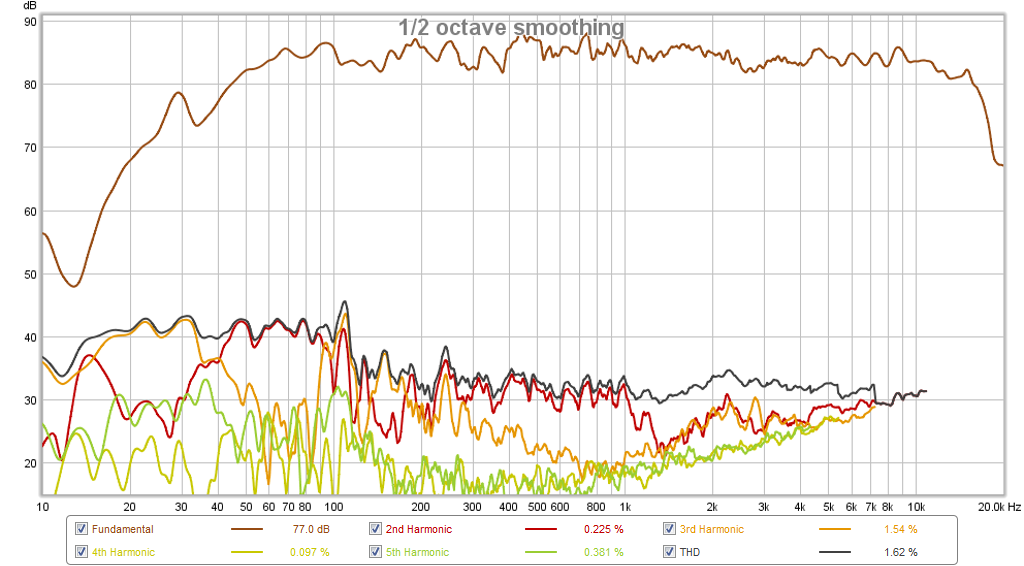
Impulse and Step Response:
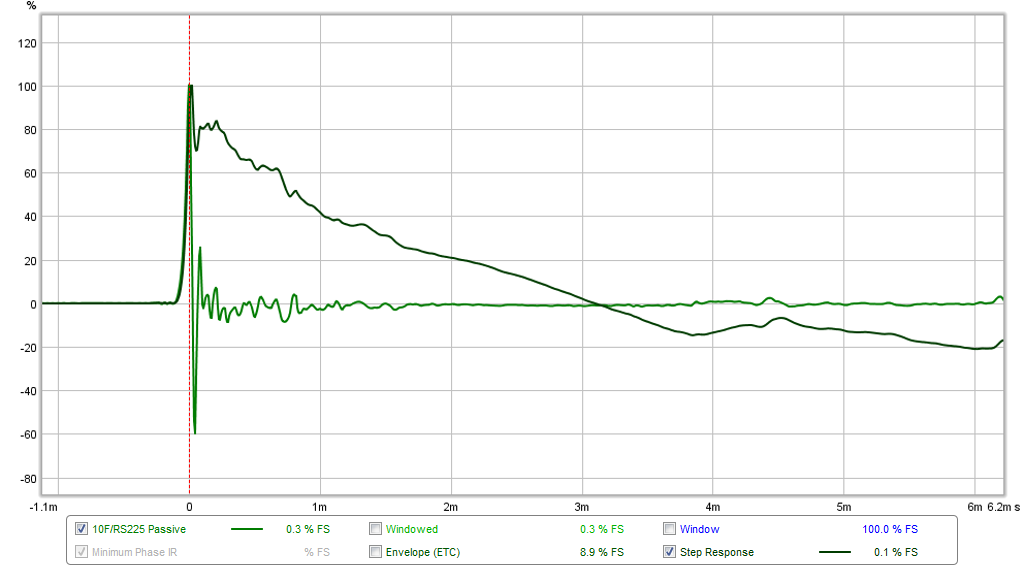
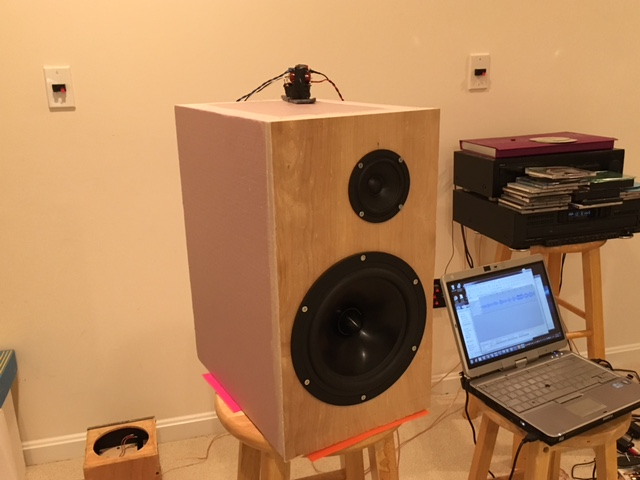
Perhaps he was suggesting a lower XO point like 500Hz and use a full range (wideband) driver for the "tweeter" - similar to FAST systems over in the Full Range Forum. FAST (Fullrange Assisted Subwoofer Technology) or 2-way speakers with low XO point can sound very good.
Here is one example of a FAST that I really think sounds great using an RS225-8 and Scan Speak 10F/8424 as the midtweet.
10F/8424 & RS225-8 FAST Ref Monitor
I made a passive transient perfect 1st order XO for it, and now use this as my main speaker for testing amps over the past 2 years (ignore label that says FF85WK - works for either driver):
Frequency Response and Phase:

Distortion:

Impulse and Step Response:


You simply can't create the illusion of the huge Albert Hall and a huge classical concert in your puny little living room.
Who are you kidding?
Ultimately true, of course.
But you can still get a surprisingly credible approximation, with the right ingredients. These are, IMHO:
1) minimal compression (compression constrains macro-dynamics)
2) low mechanical losses (mech. losses reduce micro-dynamics)
3) high and controlled directivity in the mid-high freq. range (which lets you hear "into" the recording with fewer distractions from room reflections)
I think few people have heard a really fine system that achieves these three goals, while still being well-balanced in terms of frequency response and free from objectionable distortions.
Marco
BTW, system7: your invitation to swing by for a listen is still valid ;-)
Actually, xrk971, I quite like the idea of an 8" woofer with a 4" SS 10F cone mid/tweet. Probably suits my severely limited hearing these days. Which falls apart above 10kHz when I last tested it. Doubtless due to some severely loud bands I listened to in my youth. 
I am flattered the invite to marco_gea's London apartment still stands. This was a very fine speaker IMO:
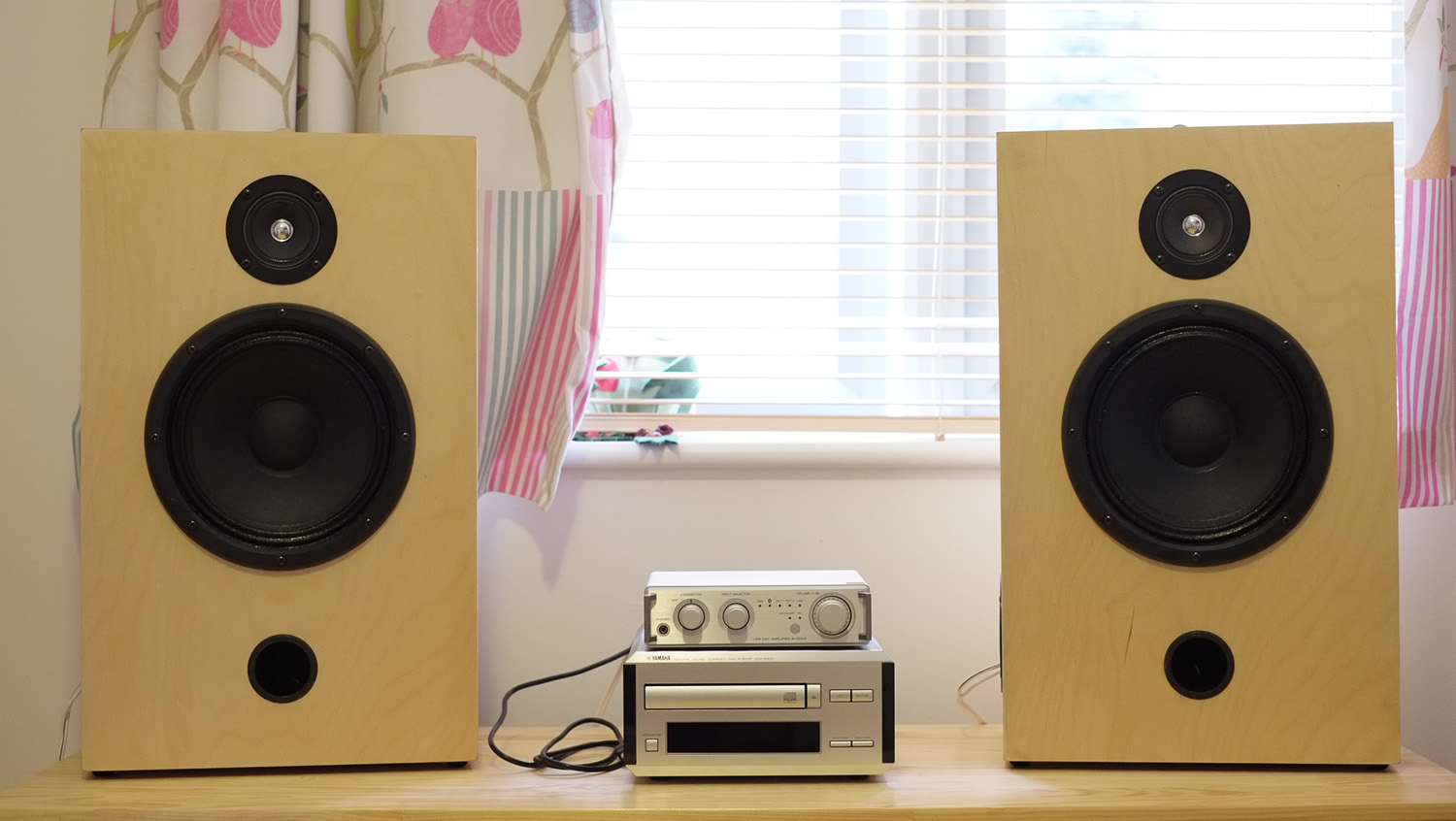
Cheap too. With the benefit of hindsight, I would double the Monacor HT-22/8 tweeters in series and aligned vertically to reduce distortion. And maybe add a cheapie supertweeter for the top octave around 8kHz.
The ancient LEAK Sandwich 300 doesn't exactly convey what I am talking about, but suggests some engineering power principles.
I am flattered the invite to marco_gea's London apartment still stands. This was a very fine speaker IMO:
Cheap too. With the benefit of hindsight, I would double the Monacor HT-22/8 tweeters in series and aligned vertically to reduce distortion. And maybe add a cheapie supertweeter for the top octave around 8kHz.
The ancient LEAK Sandwich 300 doesn't exactly convey what I am talking about, but suggests some engineering power principles.
Attachments
This idea will run forever, perfection an' all that. But really it's a chimera. An illusion. You simply can't create the illusion of the huge Albert Hall and a huge classical concert in your puny little living room.
Who are you kidding?
Me? Nobody

Ro808, are you seriously telling us this is your home setup?

I think you are having a laugh! I could criticise that at many levels.
YouTube
I like what Shane Rich says about an MTM design. More direct speaker, less of the room acoustic. I think that is the way forwards.
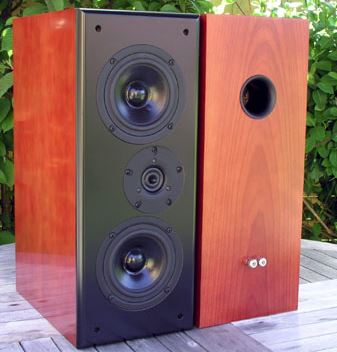
I could probably make a good case for doubling the tweeters, too. MTTM.

I think you are having a laugh! I could criticise that at many levels.
YouTube
I like what Shane Rich says about an MTM design. More direct speaker, less of the room acoustic. I think that is the way forwards.
I could probably make a good case for doubling the tweeters, too. MTTM.
Such a system came to mind.
My speakers are about the size of the bass bins in that image. Without DSP room modi should be terrible in that space, with the rooftop acting as an additional, large and uncontrolled horn.
The speaker in the poster is the "best selling (pseudo) high end speaker ever", the JBL L-100.
It does belong in this thread imho.
Here's the commercial.
The guy behind this is Steve Steigman and the model in the UK (not the US) ad campaign was Peter Murphy from the German band "Bauhaus". Which is a nice hint to the Le Corbusier LC2 chair (designed in the Bauhaus era) in which the guy is hanging.
My speakers are about the size of the bass bins in that image. Without DSP room modi should be terrible in that space, with the rooftop acting as an additional, large and uncontrolled horn.
The speaker in the poster is the "best selling (pseudo) high end speaker ever", the JBL L-100.
An externally hosted image should be here but it was not working when we last tested it.
It does belong in this thread imho.
Here's the commercial.
The guy behind this is Steve Steigman and the model in the UK (not the US) ad campaign was Peter Murphy from the German band "Bauhaus". Which is a nice hint to the Le Corbusier LC2 chair (designed in the Bauhaus era) in which the guy is hanging.
Last edited:
I once(twice?) had 10" Allison woofers in a Renault 5, then in a Golf(then called a Rabbit over here, come to think of it, they labeled the R5 a LeCar, silly marketing guys). First time I turned on the little amp my heart jumped. Until I fixed that I left the door open when turning it on.
Member
Joined 2009
Paid Member
I can only recap the wise words of Lynn Olson:
http://www.diyaudio.com/forums/multi-way/190663-sparkling-treble-sibilance-2.html#post2604196
Bigun, you are a terrible troll. Have you actually ever designed or built a moderately competent loudspeaker? It's not easy. Mainly, IMO, because such a thing doesn't exist.
well, I think your comment was well out of context - a low XO is a problem as described by Lynn but in other regards it's preferred.
I was thinking about my PMC floor standing speakers, FB1, 2-way. I have the originals which have a higher XO than you'd want given dispersion hand-off between woofer and tweeter. Three generations later, the FB1i had a lower XO, enabled through the use of a soft dome tweeter that can operate lower. The result being a better hand off between woof and tweet. It's not first order for starters. I could do this upgrade myself.
'x' raises another interest of mine - the FAST arrangement. I can't do that with my PMCs so that would have to be a different project.
At least I am a harmless troll though ! - I have never built a speaker with more than one driver so the world of XO is new to me. I have build a few speakers with only one driver - see photos
I do like how the sub-woofer turned out, that's the first photo. Two drivers mounted push-push, one faces out, one faces in, 2nd order harmonics cancel, no box vibrations, steel rods connect the drivers.
I mostly build amps. If you like to build amps, I have a Class AB amp that I'd put up against any amplifier you care to name, it's that good.
Attachments
Last edited:
Ro808,
IIRC the big woofer in Bigun's build is an Audio Nirvana 15".
Edit: Found the build thread - A Big'un - the Audio Nirvana Super 15
IIRC the big woofer in Bigun's build is an Audio Nirvana 15".
Edit: Found the build thread - A Big'un - the Audio Nirvana Super 15
Those are some serious 12-15" subwoofers, Bigun:

I suppose they project the sound very well on the big baffles. What Troels Gravesen describes as "Comes with a room" on his huge "Poor Man's Strad" project:
Poor Man'
I'm not too fanatical about big bass.
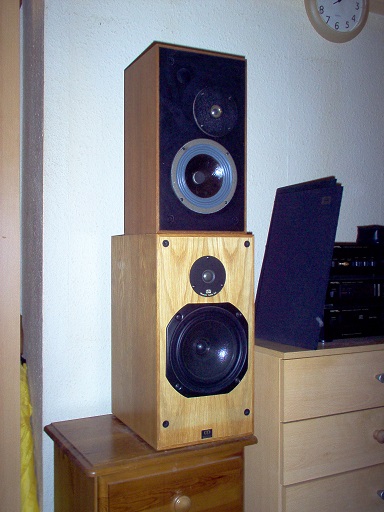
The bigger pair is just closed box without much bafflestep, ie a small bass coil. Close to the wall, you shouldn't need bafflestep. And too much bass just annoys me. My brother in law describes bass as a sort of foundation to the sound, an acoustic which conveys the concert hall, and I think he is right.
I ought to spend some time explaining how BW3 works, because I'm not sure people really get what it does. Your comment about the poor PMC FB1 (famous old vifa metal dome, isn't it?) dispersion might then make more sense. See, phase aligned like LR2 and LR4 is fine on axis, but above and below axis the two drivers lose phase coherence, and the sound changes. This is the 3dB power hole I often describe.
Both the speakers in my room are butterworth designs. 90 degree phase at crossover, but nevertheless flat frequency response on axis. They have more power at the crossover point, which makes them more consistent off-axis. There is a higher power lobe above axis, IIRC, but this is offset by the poorer dispersion of the bass, so it sort of works out. The fact is you don't get the huge nulls off axis like you do with phase aligned designs. And this is one of the musical secrets of most BBC and KEF designs.
Rogers Loudspeakers › LS5/9
In fact the impedance is remarkably flat too. Which made them valve-friendly. Another interesting aspect is with, say, LR2, you might tune the bass filter to 2kHz, and the tweeter filter to 5kHz for a 3.5kHz XO. With 3.5kH BW3, both filters are tuned to the same 3.5kHz frequency. Bafflestep is a separate matter, but there are ways to do it.
I suppose they project the sound very well on the big baffles. What Troels Gravesen describes as "Comes with a room" on his huge "Poor Man's Strad" project:
Poor Man'
I'm not too fanatical about big bass.
The bigger pair is just closed box without much bafflestep, ie a small bass coil. Close to the wall, you shouldn't need bafflestep. And too much bass just annoys me. My brother in law describes bass as a sort of foundation to the sound, an acoustic which conveys the concert hall, and I think he is right.
I ought to spend some time explaining how BW3 works, because I'm not sure people really get what it does. Your comment about the poor PMC FB1 (famous old vifa metal dome, isn't it?) dispersion might then make more sense. See, phase aligned like LR2 and LR4 is fine on axis, but above and below axis the two drivers lose phase coherence, and the sound changes. This is the 3dB power hole I often describe.
Both the speakers in my room are butterworth designs. 90 degree phase at crossover, but nevertheless flat frequency response on axis. They have more power at the crossover point, which makes them more consistent off-axis. There is a higher power lobe above axis, IIRC, but this is offset by the poorer dispersion of the bass, so it sort of works out. The fact is you don't get the huge nulls off axis like you do with phase aligned designs. And this is one of the musical secrets of most BBC and KEF designs.
Rogers Loudspeakers › LS5/9
In fact the impedance is remarkably flat too. Which made them valve-friendly. Another interesting aspect is with, say, LR2, you might tune the bass filter to 2kHz, and the tweeter filter to 5kHz for a 3.5kHz XO. With 3.5kH BW3, both filters are tuned to the same 3.5kHz frequency. Bafflestep is a separate matter, but there are ways to do it.
Attachments
3500Hz will do in a 5 or 5.5" woofer and 1 or 0.75" tweeter mini monitor, but I would prefer an 8 or 10" with 1.25" tweeter HES crossed at 2KHz or - with waveguide - even lower. If you want full range, 40Hz and up.... 1 step closer to Royal Albert Hall 
XRK971's FAST is an appealing alternative, but with sensitivity most likely <90dB.
XRK971's FAST is an appealing alternative, but with sensitivity most likely <90dB.
Last edited:
@Bigun, I jumped through your build thread and I do like the concept of 1 big driver in a large cab. As usual, a few questions arose:
- How does that whizzer / phaseplug perform in relation to the lower (cone) spectrum? I would suspect some cuppy, beamy characteristics.
- VAS is very high and xmax very low, which implies a very, very large cab or an OB as was mentioned in the thread. I wonder how these AN drivers would handle high power, bass heavy input.
- As I understood, you didn't measure these drivers in the cabs, which would be the only objective indicator on performance.
- How does that whizzer / phaseplug perform in relation to the lower (cone) spectrum? I would suspect some cuppy, beamy characteristics.
- VAS is very high and xmax very low, which implies a very, very large cab or an OB as was mentioned in the thread. I wonder how these AN drivers would handle high power, bass heavy input.
- As I understood, you didn't measure these drivers in the cabs, which would be the only objective indicator on performance.
In the end, there is no debate about the compromises of domestic loudspeakers. We make compromises. The facts of it. 
My brother-in-law has always liked the good sound. He generously gave me his old Radford STA-25 valve power amp. Being a mere noob, back in the 1960's day, I really didn't appreciate you had to set the grid bias up for low distortion.
And valves really never liked a complex-impedance reflex load. Happier with closed box.
Where's he at these days? When he was confined to his bedroom during a painful cancer recovery, he was listening to Joachim Gerhard's splendid Manger design. Something quite amazing about those speakers, but COLD.
These days, he has a splendid 5 unit MTM Scanspeak/RAAL surround sound system, supplemented by huge 4X 15" bass units built into the wall. A subscription to the Berlin Philarmonic's high quality feed doubtless adds a lot.
TBH, it is SO GOOD that you just get totally involved. BBC Music - 20 moments to remember the Proms 2017 by. Check out #8, Anoushka Shankar's concert for the real deal.
Last, but not least, is BW3 dispersion. I like it.
My brother-in-law has always liked the good sound. He generously gave me his old Radford STA-25 valve power amp. Being a mere noob, back in the 1960's day, I really didn't appreciate you had to set the grid bias up for low distortion.
And valves really never liked a complex-impedance reflex load. Happier with closed box.
Where's he at these days? When he was confined to his bedroom during a painful cancer recovery, he was listening to Joachim Gerhard's splendid Manger design. Something quite amazing about those speakers, but COLD.
These days, he has a splendid 5 unit MTM Scanspeak/RAAL surround sound system, supplemented by huge 4X 15" bass units built into the wall. A subscription to the Berlin Philarmonic's high quality feed doubtless adds a lot.
TBH, it is SO GOOD that you just get totally involved. BBC Music - 20 moments to remember the Proms 2017 by. Check out #8, Anoushka Shankar's concert for the real deal.
Last, but not least, is BW3 dispersion. I like it.
Attachments
Low output SET amps are not the best companion to BR loudspeakers of modest size, that's a fact. Even more so if the impedance shows serious drops.
Solution: step up in cone size (HES) and you might switch to 16 Ohm drivers. Another option: feed the bass with class D.
Solution: step up in cone size (HES) and you might switch to 16 Ohm drivers. Another option: feed the bass with class D.
Last edited:
AFAIK , the Radford STA-25 was not a SET amplifier. My version was not exactly the same as this one:
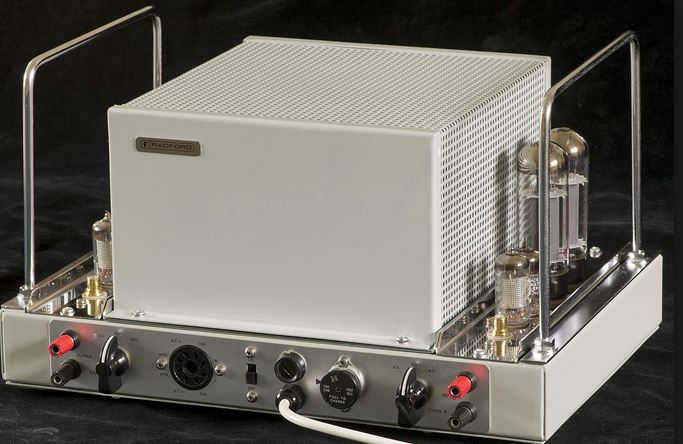
With valves you did best make a guess at speaker impedance, so 4-8-16 ohm taps. This mainly affected efficiency, but because of the output transformer which worked less well at extreme bass frequencies, you just didn't get huge damping factor on the bass. Mine differed in having an adjustable pair of potentiometers to set the grid bias, aka output crossover bias. But if we look at a schematic, I see some global feedback. Which is less SET and more mainstream negative feedback.
The pre-amp and FM tuner were both transistor designs. So clearly the magic was in the fast valve output stage.
TBH, I puzzled over valves for years. It seemed like subsequent transistor designs were a lot worse. But we now know that early transistor designs suffered from transient intermodulation distortion. Which was simply that output transistors ran out of gain at high frequency, so feedback stopped working properly. More modern designs like my Rotel transistor amp pretty much do what it says on the box. 0.1% distortion into 8 ohms up to 20kHz.
The exact Norton-Thevenin mathematical theory tells us that, WITH A FLAT IMPEDANCE LOAD, voltage and current devices get to the same place. So my interest these days is getting a flat impedance!
With valves you did best make a guess at speaker impedance, so 4-8-16 ohm taps. This mainly affected efficiency, but because of the output transformer which worked less well at extreme bass frequencies, you just didn't get huge damping factor on the bass. Mine differed in having an adjustable pair of potentiometers to set the grid bias, aka output crossover bias. But if we look at a schematic, I see some global feedback. Which is less SET and more mainstream negative feedback.
The pre-amp and FM tuner were both transistor designs. So clearly the magic was in the fast valve output stage.
TBH, I puzzled over valves for years. It seemed like subsequent transistor designs were a lot worse. But we now know that early transistor designs suffered from transient intermodulation distortion. Which was simply that output transistors ran out of gain at high frequency, so feedback stopped working properly. More modern designs like my Rotel transistor amp pretty much do what it says on the box. 0.1% distortion into 8 ohms up to 20kHz.
The exact Norton-Thevenin mathematical theory tells us that, WITH A FLAT IMPEDANCE LOAD, voltage and current devices get to the same place. So my interest these days is getting a flat impedance!
Attachments
- Home
- Loudspeakers
- Multi-Way
- Classic monitor designs?
